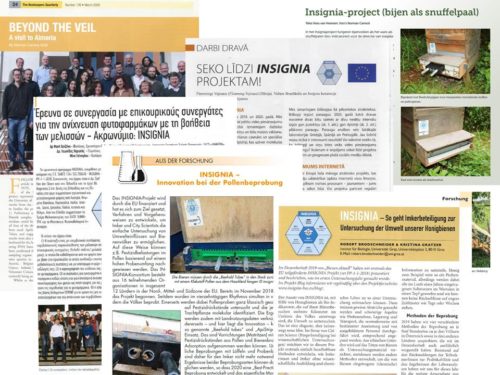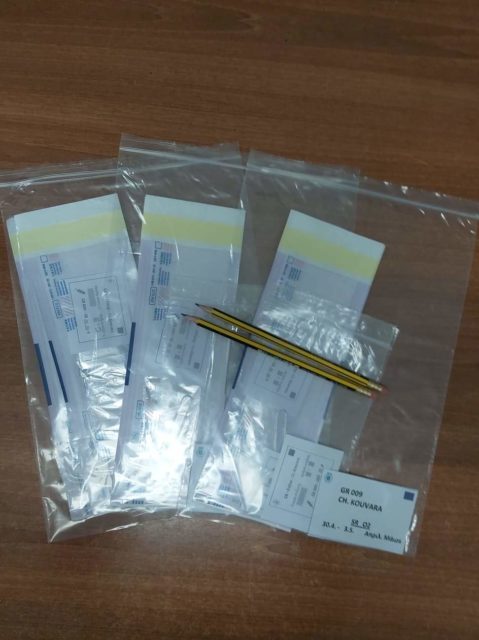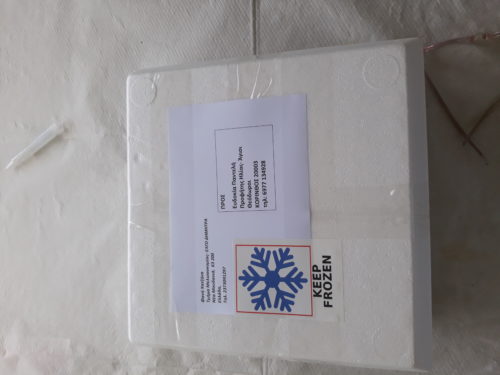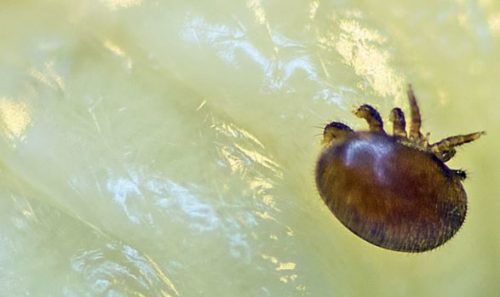
“Today (Friday) we received the last batch of pollen samples collected by citizen scientists from all over Europe in the first half of the season. Now, time to go to the lab and do the DNA extractions!”
Alice Pinto

PREPARATORY ACTION FOR MONITORING OF ENVIRONMENTAL POLLUTION USING HONEY BEES

“Today (Friday) we received the last batch of pollen samples collected by citizen scientists from all over Europe in the first half of the season. Now, time to go to the lab and do the DNA extractions!”
Alice Pinto

With samples of pollen in alcohol, and ApiStrips from the first four sampling rounds of 2020 having arrived at the laboratories in Portugal, Spain and Greece for analysis, and with beekeepers in Austria, Belgium, Denmark, France, Greece, Ireland, Italy, Latvia and the UK preparing for the sixth sampling round this weekend, it is a busy time for the INSIGNIA project. The process of disseminating information about the project also continues, with articles about the progress of the project in popular beekeeping journals having recently been published in Austria, Germany, Greece, Latvia, the Netherlands and the UK. Further articles will be published soon in other participating countries…
Maybe you have not realized that is already 2 full months since we collected the 1st INSIGNIA 2020 sample of pollen and Apistrips! Yes! indeed! and the samples were stored to Citizen Scientists’ freezers till now!
However, the time has come for the first set of samples to be sent to National Coordinators labs, for little processing, checking, homogenizing, and then shipped to laboratories for analysis,
But let’s take in from the beginning. Once the sample of pollen or an Apistrip is collected, it is placed in its own labeled plastic bag , and all samples together from each sampling round in one big labeled bag and stored in -20! See below the pre labeled bags which were sent to Citizen Scientists.

So far so good. Second and very important step is the transfer of the filed bags of pollen to the National Coordinators laboratories in each country. How on earth, can we retain the cool chain required for the pollen to keep its DNA properties intact?
Well, we have a simple answer! Keep the pollen as frozen or cold as possible. Below we show you how we did it in Greece!


Styrofoam boxes with 4 freezing blocs were sent to each CSs, who packed the pollen between the newly frozen blocks and returned them via courier company to the National Coordinator’s laboratory. That way, the samples travelled secure, quickly and retain the cool chain for max 2 days of travel. Furthermore, the courier service was offered by the National Coordinator’s lab, in this case by the Department of Apiculture.
Now we do hope for excellent results!
Written by Fani Hatjina, National Coordinator, Greece
Today was a happy day for the INSIGNIA team at Bragança, Portugal. We received many pollen samples collected across Europe by diligent citizen scientists. We cannot wait to start the metabarcoding analysis of all the samples collected in 2020 to find out which plants bees are visiting.
Alice Pinto

Why talk about a parasite? Because only bee colonies in balance are good bioindicators.
All the INSIGNIA colonies are taken care of by our Citizens Scientist. They run the colonies as they use to. The aim is to supply a pollination service og create a honey production. The, probably, biggest treat against the honeybee colonies is the parasitic mite Varroa destructor. The mite is from 1-1,5 mm. Rather small. Varroa is living on the honeybees and does multiply in the sealed brood of the honeybees. It only bread on honeybees.

Insignia is more than strips and pollen. Our colonies do also produce the most delicious honey. In Denmark, this year’s honey harvest seems until now to become good. The INSIGNIA 1 colonies gave a harvest of spring honey of around 20 kg each. The honey was harvested around the 12th of June. That is in the blooming time of the oilseed rape. Give a very creamy and tasteful honey. Other exciting flowers are expected to be in as well. The fruit trees this year looks very nice and productive a well. Dandelion was flowering very intense and hawthorn is very smelly and dominating at the end of the spring flow. Anyway, love this honey. And now we made a special edition for our colleagues around europe. By the way, the metabar coding of the pollen sampling will confirm above later in the season.

Some of the team from the University of Almaria presenting creamed honey from Denmark.